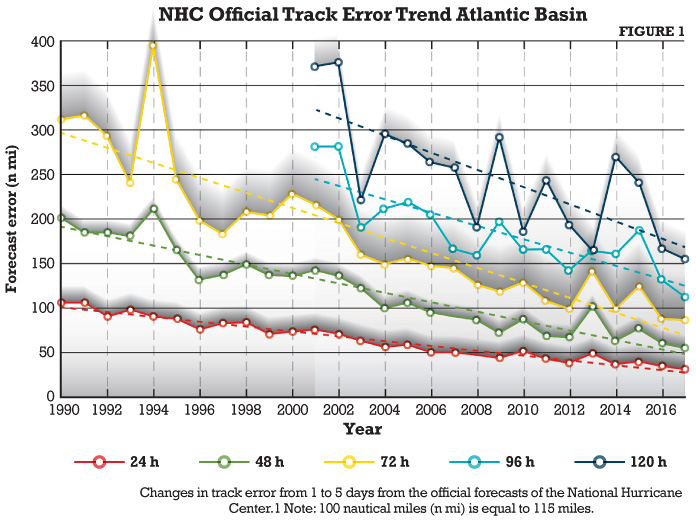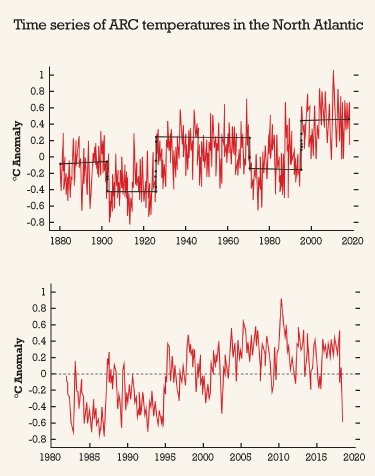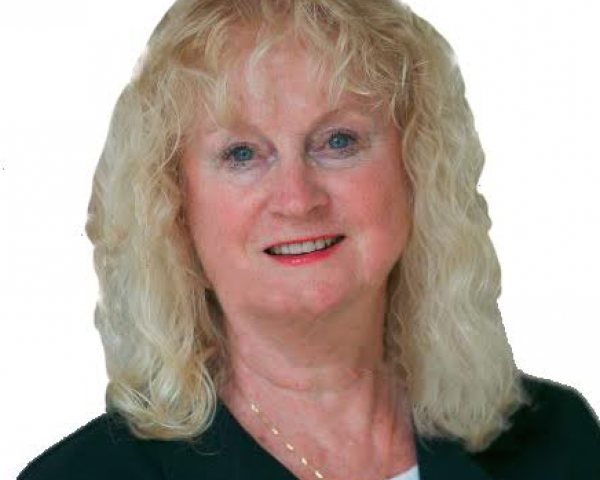Maine Says: Buy Your Own Marijuana
Maine joined the list of states that preclude worker’s compensation coverage for the cost of medical marijuana used to treat a workplace injury.

Maine joined the list of states that preclude worker’s compensation coverage for the cost of medical marijuana used to treat a workplace injury.

Get Involved
Our authors are what set Insurance Thought Leadership apart.
|
Partner with us
We’d love to talk to you about how we can improve your marketing ROI.
|

Francis Mootz is a professor of law at the McGeorge School of Law.
The firm of the future needs to combine the innovative thinking of an insurtech with the experience and knowledge of a traditional insurer.

Get Involved
Our authors are what set Insurance Thought Leadership apart.
|
Partner with us
We’d love to talk to you about how we can improve your marketing ROI.
|
In the short term, blockchain can be applied to data exchange and storage, P2P electronic payments and smart contracts.

Blockchain is a revolutionary technology that is likely to have a far-reaching impact on business – on a par with the transformative effect of the internet. Not surprisingly, the huge potential promised by blockchain has prompted a flurry of research activity across different sectors as diverse organizations race to develop applications. In this article, we’ll explore the many benefits that blockchain could bring to the insurance industry and the different challenges that will need to be overcome.
Overview
Blockchain has strong potential in the short and long term in several different areas, particularly where it links with emerging technologies such as the Internet of Things (IoT) and artificial intelligence (AI). But its potential for delivering new applications also depends on the development of blockchain technology itself. In the medium and short term, there are three categories where blockchain can be applied:
Data storage and peer-to-peer electronic transfer are feasible blockchain applications for the short term. At this stage, the technical advantages of blockchain are mainly reflected in data exchange efficiencies, as well as larger-scale data acquisition.
See also: The Opportunities in Blockchain
Smart contracts via blockchain will play a more important role in the medium to long term. By that time, blockchain-based technology will have a far-reaching impact on the business model of insurance companies, industrial management models and institutional regulation. Of course, there will be challenges to overcome, and further technological innovation will be needed as blockchain’s own deficiencies or risks emerge during its evolution. But just like internet technology decades ago, blockchain promises to be a transformative technology.
Scenarios for blockchain applications in insurance
Macro level
Proponents of blockchain technology believe it has the power to break the data acquisition barrier and revolutionize data sharing and data exchange in the industry. Small and medium-sized carriers could use blockchain-based technology to obtain higher-quality and more comprehensive data, giving them access to new opportunities and growth through more accurate pricing and product design in specific niche markets. At the same time, blockchain-based insurance and reinsurance exchange platforms – that could include many parties – would also upgrade industry processes.
For example, Zhong An Technology is currently working closely with reinsurers in Shanghai to try to establish a blockchain reinsurance exchange platform.
Scenario 1 – Mutual insurance Blockchain is a peer-to-peer mechanism, via the DAO (decentralized autonomic organization) as a virtual decision-making center, and premiums paid by each and every insured are stored in the DAO. Each and every insured participant has the right to vote and therefore decide on final claim settlement when a claim is triggered. Blockchain makes the process transparent and highly efficient with secure premium collection, management and claim payment thanks to its decentralization. In China, Trust Mutual Life has built a platform based on blockchain and biological identification technology. In August 2017, Trust Mutual Life launched a blockchain-based mutual life insurance product called a “Courtesy Help Account,” where every member can follow the fund. Plus, the platform reduces operational costs more than a traditional life insurance company of a similar size.
Scenario 2 – Microinsurance (short-term insurance products for certain specific scenarios) An example of short-term insurance could be for car sharing or providers of booking and renting accommodation via the internet. Such products are mainly pre-purchased by the service provider and then purchased by end users. However, blockchain makes it possible for end users to purchase insurance coverage at any time based on their actual usage, inception and expiring time/date. In this way, records would be much more accurate and therefore avoid potential disputes.
Scenario 3 – Automatic financial settlement The technical characteristics of blockchain have inherent advantages in financial settlement. Combined with smart contracts, blockchain can be applied efficiently and securely throughout the entire process of insurance underwriting, premium collection, indemnity payment and even reinsurance.
Micro level
Blockchain has the potential to change the pattern of product design, pricing and claim services.
Parametric insurance (e.g. for agricultural insurance, delay-in-flight insurance, etc.): Parametric insurance requires real-time data interface and exchange among different parties. Although it is an efficient form of risk transfer, it still has room for further cost improvement. Taking parametric agricultural insurance and flight delay insurance as examples, a lot of human intervention is still required for claim settlement and payment. With blockchain, the efficiency of data exchange can be significantly improved. Smart contracts can also further reduce human intervention in terms of claim settlement, indemnity payment, etc., which will significantly reduce the insurance companies’ operating costs. In addition, operating efficiency is increased, boosting customer satisfaction.
Some Chinese insurers are already working on blockchain-based agricultural insurance. In March 2018, for example, PICC launched a blockchain-based livestock insurance platform. Currently, the project is limited to cows. Each cow is identified and registered in the blockchain-based platform during its whole life cycle. All necessary information is uploaded and stored in real time in the platform. Claims are triggered and settled automatically via blockchain. The platform also serves as an efficient and reliable food safety tracing system.
Auto insurance, homeowners insurance: Blockchain has wider application scenarios in the field of auto insurance and homeowners insurance when combined with the IoT. There are applications from a single vehicle perspective as well as portfolios as a whole. From a standalone vehicle perspective, the complete history of each vehicle is stored in blocks. This feature allows insurers to have access to accurate information on each and every vehicle, plus maintenance, accidents, vehicle parts conditions, history and the owner’s driving habits. Such data facilitates more accurate pricing based on dedicated information for each and every single vehicle.
From the insured’s point of view, the combination of blockchain and IoT effectively simplifies the claims service process and claim settlement efficiency. From the perspective of the overall vehicle, blockchain and IoT can drastically lower big data acquisition barriers, especially for small and medium-sized carriers. This will have a positive impact on pricing accuracy and new product development in auto insurance.
Taking usage-based insurance (UBI) for autos as an example, it’s technically possible to record and share the exact time and route of an insured vehicle, meaning that UBI policies could be priced much more accurately. Of course, insurers will have to consider how to respond in situations where built-in sensors in the insured vehicle break or a connection fails. Furthermore, insurance companies also have to decide whether an umbrella policy is needed on top of the UBI policy, to control their exposure when such situations occur.
Cargo insurance: Real-time information sharing of goods, cargo ships, vehicles, etc. is made possible with blockchain and the IoT. This will not only improve claims service efficiency but also help to reduce moral hazards. In this regard, Maersk, EY Guardtime and XL Catlin recently launched a blockchain-based marine insurance platform cooperation project. Its aim is to facilitate data and information exchange, reduce operating costs among all stakeholders and improve the credibility and transparency of shared information.
International program placement and premium/claims management: Blockchain-based technology allows insurance companies, brokers and corporate risk managers to improve the efficiency of international program settlement and daily management, at the same time reducing data errors from different countries and regions and avoiding currency exchange losses.
Coping with claim frauds: Blockchain is already being applied to verify the validity of claims and the amount of adjustment. In Canada, the Quebec auto insurance regulator (Québec Auto Insurance) has implemented a blockchain-based information exchange platform. Driver information, vehicle registration information, the vehicle’s technical inspection result, auto insurance and claims information, etc. are all shared through the platform. The platform not only reduces insurance companies’ operating costs but also effectively helps to reduce fraud. All insurance companies that have access to the platform receive a real-time notice when a vehicle is reported to be stolen. Insurance companies have full access to every vehicle’s technical information, which promotes more accurate pricing for individual policyholders.
Claims settlement: Using a smart contract, the insured will automatically receive indemnity when conditions in the policy are met: Human intervention will not be needed to adjust the settlement. In the future, some insurance products will effectively be smart contracts whereby coverages, terms and conditions are actually the parameters of the smart contract. When the parameters are met, policies are triggered automatically by the smart contract and a record stored in the blockchain. Business models like this will not only build higher trust in the insurance company but will also greatly increase its operational efficiency, reducing costs; it will also help to reduce moral hazard.
Internal management systems: Internal management systems could be automated through use of blockchain and smart contracts, helping to improve management efficiency and reduce labor costs as well as the efficiency of compliance audit.
See also: How Insurance and Blockchain Fit
Challenges and problems Decentralization strengthens information sharing and reduces the monopoly advantages that information asymmetry provides. Under such circumstances, insurance companies have to pay more attention to pricing, product development, claims services and even reputation risk. All this adds up to new challenges for the company management. At the same time, every aspect of the insurance industry must be more focused on ensuring the accuracy of original information at the initial stage of its business. Knowing how to respond to false declarations from insureds will be crucial.
From a more macro perspective, “localized blocks” of data will be inevitable in the early phase of development in line with the pace of technical development and regulatory constraints. In theory, it is impossible to hack blockchain, but data protection will be an issue for localized blocks. Therefore, higher cyber security protection will be required to protect these localized blocks. The interaction of blockchain with other technologies could mean that existing intermediary roles are replaced by new technologies in different sectors. If the insurance industry wants to ensure the continuous development of the intermediary, it should address the possible disruptive risks to existing distribution business models posed by blockchain.
The necessary investment (both tangible and intangible costs) associated with adopting blockchain technology is a big consideration for many companies at this stage. Insurance companies and reinsurance companies operate numerous systems, and the decision to integrate blockchain-based technology/platform shouldn’t be taken lightly. At the current stage of blockchain evolution, this could be one of the biggest obstacles facing insurers.
Overall, blockchain is an inspiring prospect, and there is every reason to believe that this technological breakthrough will bring positive effects to individual insurers everywhere. But at the same time, we need to understand the mutual challenges that lie ahead and work together to promote our industry’s development in what promises to be an exciting new era.
Get Involved
Our authors are what set Insurance Thought Leadership apart.
|
Partner with us
We’d love to talk to you about how we can improve your marketing ROI.
|
The IoT can facilitate and improve claims management, adding even greater value than through its ability to reduce risks.

Get Involved
Our authors are what set Insurance Thought Leadership apart.
|
Partner with us
We’d love to talk to you about how we can improve your marketing ROI.
|

David Wechsler has spent the majority of his career in emerging tech. He recently joined Comcast Xfinity, focused on helping drive the adoption of Internet of Things (IoT), in particular with insurance, energy and smart home/home automation.
2018 should see smaller economic loss from landfalling hurricanes, but there is a potential game-changer for longer time horizons.

 An average track error at 48 hours of about 50 nautical miles is impressive in a meteorological context. However, a track uncertainty of just 50 nautical miles for Hurricane Irma’s predicted Florida landfall in 2017 meant the difference between a costly Miami landfall or a relatively benign Everglades landfall. As seen in the figure above, we are approaching a track forecast accuracy limit for one to two days, arising from the inherent unpredictability of weather. Over the past decade, the greatest improvements have been in the three- to five-day track forecasts.
A recent analysis conducted by Climate Forecast Applications Network (CFAN) compared track errors from different global and regional weather forecast models, all of which are considered by the NHC in preparing its forecast. The European model, operated by the European Center for Medium Range Weather Forecasting (ECMWF) and supported by 22 European countries, consistently outperformed the U.S. models maintained by the National Oceanic and Atmospheric Administration (NOAA) for track forecasts beyond two days. At five days lead time, the ECMWF model had an average track error for the 2017 season of 120 nautical miles, compared with 148 nm for the official NHC forecasts.
Innovators in the private sector apply proprietary algorithms to improve upon the NOAA and ECMWF model forecasts. At CFAN, ECMWF forecasts are corrected for model biases based on historical track errors. For 2017, CFAN’s bias-corrected storm tracks resulted in five-day average track error of 114 nautical miles – 26% lower than the average track error for the official NHC forecast.
Forecasts beyond five days (120 hours) are becoming increasingly important to the insurance community, especially with the development of insurance-linked securities and catastrophe bonds. The superior global weather forecasts provided by the European model (ECMWF) produced Atlantic hurricane tracks for 2017 with an average track error of 200 nautical miles out to eight days in advance. The proprietary track calibrations and synthetic tracks produced by CFAN from the European model maintain an average track error of 200 nautical miles even beyond 10 days, for the longest-lived storms.
Forecasting of storm wind intensity (as measured by maximum sustained wind speed) is also of key importance. The NHC’s intensity forecasts are slowly improving – the NHC’s intensity forecast errors at time horizons of two to five days average from 10 to 20 knots (10 knots = 11.5 mph) over the past several years. The greatest challenge in short-term hurricane forecasting remains the prediction of rapid intensification, as occurred with Hurricane Harvey in August 2017, immediately before landfall. The NHC has invested considerable resources in the development of high-resolution regional models to improve prediction of hurricane intensity. The prediction of rapid intensification remains elusive, although there is considerable research underway on this topic.
Seasonal and longer-term forecasts
Advances have been made in forecasting the probability of track locations on weekly timescales out to a month in advance. Monthly forecasts based on global weather forecast models are provided by several private sector weather forecast providers. Beyond the timescale of about a month, however, global models show little skill in predicting hurricanes. Hence, most seasonal forecasting efforts, particularly beyond timescales of six months, focus on data-driven statistical methods that examine longer-term trends in the global atmosphere.
Sea surface temperatures in the Atlantic and the tropical Pacific are key predictors for seasonal forecasts of Atlantic hurricane activity. El Niño (warmer tropical Pacific sea surface temperatures) and La Niña (cooler tropical Pacific sea surface temperatures) patterns have a strong influence, with La Niña being associated with higher levels of Atlantic hurricane activity.
Atmospheric circulation patterns also have some long-term “memory” that is useful for seasonal forecasts. CFAN’s research has identified additional predictors of seasonal Atlantic hurricane activity through examination of global and regional interactions among circulations in the ocean and in the lower and upper atmosphere. The predictors are identified through data mining, interpreted in the context of climate dynamics analysis, and then subjected to statistical tests in historical forecasts.
See also: Hurricane Harvey’s Lesson for Insurtechs
While forecasts issued around June 1 for the coming season generally have skill that is better than climatology, different outcomes are suggested by late May/early June forecasts for the 2018 Atlantic hurricane season. Predictions range from low activity (CFAN and Tropical Storm Risk ) to average activity (Colorado State University ) to near or above normal activity (NOAA Climate Prediction Center ). While many of the late May/early June 2017 forecasts predicted an above-normal season, none of the publicly reported forecasts predicted the extreme activity that was observed during the 2017 season.
At the longer forecast horizons, forecast skill is increasingly diminished. The greatest challenge in making seasonal forecasts in April and earlier is the springtime "predictability barrier" for El Niño/La Niña, whereby random spring weather events in the tropical Pacific Ocean during spring can determine its longer seasonal evolution. Seasonal forecasts from the latest version of the European model show substantially improved forecast skill of El Niño and La Niña across the spring predictability barrier, which improves the prospects for seasonal hurricane forecasts issued in late March/early April. La Niña generally heralds an active hurricane season, whereas El Niño is generally associated with a weak hurricane season. However, the occurrence of El Niño or La Niña accounts for only about half of year-to-year variation in Atlantic hurricane activity. In particular, the extremely active years such as 2017, 2004 and 2005 were not characterized by much of a signal from La Niña.
The greatest challenge for seasonal predictions of hurricane activity is to forecast the possibility of an extremely active hurricane season such as observed during 2017, 2005, 2004 and 1995. CFAN’s seasonal forecast models capture the extremes in 1995 and 2017 but not 2004 and 2005. Improved understanding of the causes of the extreme activity during 2004 and 2005 is an active area of research.
The most important target of seasonal forecasts is the number of landfalling hurricanes and their likely locations. The number of U.S. landfalling hurricanes in one year has varied from zero to six since 1920. The number of landfalling hurricanes is only moderately correlated with overall seasonal activity. It is notable that the period of overall elevated hurricane activity from 1995 to 2014 overlapped with a historic 2006-2014 drought of major hurricane and Florida landfalls.
Several seasonal forecasters provide a prediction of landfalls. These forecasts may specify the number of U.S. and Caribbean landfalls, the probability of a U.S. landfall (tropical storm, hurricane, major hurricane). Few forecast providers attempt to predict location of the landfalls. New research conducted by CFAN scientists has uncovered strong relationships between U.S. landfall totals and spring atmospheric circulation over the Arctic, which tends to precede summer dynamic conditions in the western North Atlantic and the Gulf of Mexico.
Certain insurance contracts with hurricane exposure typically take effect Jan. 1 of each year, and for this reason there has been a desire for Atlantic hurricane forecasts to be issued in December for the following season. Such contracts often are written for a period of a year or even longer time horizons. Because of the apparent lack of hurricane predictability on this time scale, in December Colorado State University provides a qualitative forecast discussion, rather than a forecast. CFAN research has identified some sources of hurricane predictability on timescales from 12 to 48 months. Research is underway to exploit this predictability into skillful annual and inter-annual predictions of Atlantic hurricane activity.
Five- to 10-year outlooks
Some atmospheric modelers provide a five-year outlook of annual hurricane activity, focused on landfall frequency. A key element of such for such outlooks is the state of the Atlantic Multidecadal Oscillation (AMO). The AMO is an ocean circulation pattern and related Atlantic sea surface temperature that changes in 25- to 40-year periods with increased or suppressed hurricane activity.
The year 1995 marked the transition to the warm phase of the AMO, which has been an active period for Atlantic hurricanes. In the warm phase of the AMO, sea surface temperatures in the tropical Atlantic are anomalously warm compared with the rest of the global tropics. These conditions produce weaker vertical wind shear and a stronger West African monsoon system that are conducive to increased hurricane activity in the North Atlantic.
There has been a great deal of uncertainty about the status of the AMO, complicated by the overall global warming trend. According to the AMO index produced by NOAA, the current positive (warm) AMO phase has not yet ended. In contrast, an alternative AMO definition, the standardized Klotzbach and Gray AMO Index, indicates the AMO has generally been in a negative (cooler) phase since 2014 – and May 2018 had the lowest value since 2015.
An average track error at 48 hours of about 50 nautical miles is impressive in a meteorological context. However, a track uncertainty of just 50 nautical miles for Hurricane Irma’s predicted Florida landfall in 2017 meant the difference between a costly Miami landfall or a relatively benign Everglades landfall. As seen in the figure above, we are approaching a track forecast accuracy limit for one to two days, arising from the inherent unpredictability of weather. Over the past decade, the greatest improvements have been in the three- to five-day track forecasts.
A recent analysis conducted by Climate Forecast Applications Network (CFAN) compared track errors from different global and regional weather forecast models, all of which are considered by the NHC in preparing its forecast. The European model, operated by the European Center for Medium Range Weather Forecasting (ECMWF) and supported by 22 European countries, consistently outperformed the U.S. models maintained by the National Oceanic and Atmospheric Administration (NOAA) for track forecasts beyond two days. At five days lead time, the ECMWF model had an average track error for the 2017 season of 120 nautical miles, compared with 148 nm for the official NHC forecasts.
Innovators in the private sector apply proprietary algorithms to improve upon the NOAA and ECMWF model forecasts. At CFAN, ECMWF forecasts are corrected for model biases based on historical track errors. For 2017, CFAN’s bias-corrected storm tracks resulted in five-day average track error of 114 nautical miles – 26% lower than the average track error for the official NHC forecast.
Forecasts beyond five days (120 hours) are becoming increasingly important to the insurance community, especially with the development of insurance-linked securities and catastrophe bonds. The superior global weather forecasts provided by the European model (ECMWF) produced Atlantic hurricane tracks for 2017 with an average track error of 200 nautical miles out to eight days in advance. The proprietary track calibrations and synthetic tracks produced by CFAN from the European model maintain an average track error of 200 nautical miles even beyond 10 days, for the longest-lived storms.
Forecasting of storm wind intensity (as measured by maximum sustained wind speed) is also of key importance. The NHC’s intensity forecasts are slowly improving – the NHC’s intensity forecast errors at time horizons of two to five days average from 10 to 20 knots (10 knots = 11.5 mph) over the past several years. The greatest challenge in short-term hurricane forecasting remains the prediction of rapid intensification, as occurred with Hurricane Harvey in August 2017, immediately before landfall. The NHC has invested considerable resources in the development of high-resolution regional models to improve prediction of hurricane intensity. The prediction of rapid intensification remains elusive, although there is considerable research underway on this topic.
Seasonal and longer-term forecasts
Advances have been made in forecasting the probability of track locations on weekly timescales out to a month in advance. Monthly forecasts based on global weather forecast models are provided by several private sector weather forecast providers. Beyond the timescale of about a month, however, global models show little skill in predicting hurricanes. Hence, most seasonal forecasting efforts, particularly beyond timescales of six months, focus on data-driven statistical methods that examine longer-term trends in the global atmosphere.
Sea surface temperatures in the Atlantic and the tropical Pacific are key predictors for seasonal forecasts of Atlantic hurricane activity. El Niño (warmer tropical Pacific sea surface temperatures) and La Niña (cooler tropical Pacific sea surface temperatures) patterns have a strong influence, with La Niña being associated with higher levels of Atlantic hurricane activity.
Atmospheric circulation patterns also have some long-term “memory” that is useful for seasonal forecasts. CFAN’s research has identified additional predictors of seasonal Atlantic hurricane activity through examination of global and regional interactions among circulations in the ocean and in the lower and upper atmosphere. The predictors are identified through data mining, interpreted in the context of climate dynamics analysis, and then subjected to statistical tests in historical forecasts.
See also: Hurricane Harvey’s Lesson for Insurtechs
While forecasts issued around June 1 for the coming season generally have skill that is better than climatology, different outcomes are suggested by late May/early June forecasts for the 2018 Atlantic hurricane season. Predictions range from low activity (CFAN and Tropical Storm Risk ) to average activity (Colorado State University ) to near or above normal activity (NOAA Climate Prediction Center ). While many of the late May/early June 2017 forecasts predicted an above-normal season, none of the publicly reported forecasts predicted the extreme activity that was observed during the 2017 season.
At the longer forecast horizons, forecast skill is increasingly diminished. The greatest challenge in making seasonal forecasts in April and earlier is the springtime "predictability barrier" for El Niño/La Niña, whereby random spring weather events in the tropical Pacific Ocean during spring can determine its longer seasonal evolution. Seasonal forecasts from the latest version of the European model show substantially improved forecast skill of El Niño and La Niña across the spring predictability barrier, which improves the prospects for seasonal hurricane forecasts issued in late March/early April. La Niña generally heralds an active hurricane season, whereas El Niño is generally associated with a weak hurricane season. However, the occurrence of El Niño or La Niña accounts for only about half of year-to-year variation in Atlantic hurricane activity. In particular, the extremely active years such as 2017, 2004 and 2005 were not characterized by much of a signal from La Niña.
The greatest challenge for seasonal predictions of hurricane activity is to forecast the possibility of an extremely active hurricane season such as observed during 2017, 2005, 2004 and 1995. CFAN’s seasonal forecast models capture the extremes in 1995 and 2017 but not 2004 and 2005. Improved understanding of the causes of the extreme activity during 2004 and 2005 is an active area of research.
The most important target of seasonal forecasts is the number of landfalling hurricanes and their likely locations. The number of U.S. landfalling hurricanes in one year has varied from zero to six since 1920. The number of landfalling hurricanes is only moderately correlated with overall seasonal activity. It is notable that the period of overall elevated hurricane activity from 1995 to 2014 overlapped with a historic 2006-2014 drought of major hurricane and Florida landfalls.
Several seasonal forecasters provide a prediction of landfalls. These forecasts may specify the number of U.S. and Caribbean landfalls, the probability of a U.S. landfall (tropical storm, hurricane, major hurricane). Few forecast providers attempt to predict location of the landfalls. New research conducted by CFAN scientists has uncovered strong relationships between U.S. landfall totals and spring atmospheric circulation over the Arctic, which tends to precede summer dynamic conditions in the western North Atlantic and the Gulf of Mexico.
Certain insurance contracts with hurricane exposure typically take effect Jan. 1 of each year, and for this reason there has been a desire for Atlantic hurricane forecasts to be issued in December for the following season. Such contracts often are written for a period of a year or even longer time horizons. Because of the apparent lack of hurricane predictability on this time scale, in December Colorado State University provides a qualitative forecast discussion, rather than a forecast. CFAN research has identified some sources of hurricane predictability on timescales from 12 to 48 months. Research is underway to exploit this predictability into skillful annual and inter-annual predictions of Atlantic hurricane activity.
Five- to 10-year outlooks
Some atmospheric modelers provide a five-year outlook of annual hurricane activity, focused on landfall frequency. A key element of such for such outlooks is the state of the Atlantic Multidecadal Oscillation (AMO). The AMO is an ocean circulation pattern and related Atlantic sea surface temperature that changes in 25- to 40-year periods with increased or suppressed hurricane activity.
The year 1995 marked the transition to the warm phase of the AMO, which has been an active period for Atlantic hurricanes. In the warm phase of the AMO, sea surface temperatures in the tropical Atlantic are anomalously warm compared with the rest of the global tropics. These conditions produce weaker vertical wind shear and a stronger West African monsoon system that are conducive to increased hurricane activity in the North Atlantic.
There has been a great deal of uncertainty about the status of the AMO, complicated by the overall global warming trend. According to the AMO index produced by NOAA, the current positive (warm) AMO phase has not yet ended. In contrast, an alternative AMO definition, the standardized Klotzbach and Gray AMO Index, indicates the AMO has generally been in a negative (cooler) phase since 2014 – and May 2018 had the lowest value since 2015.
 A time series of sea surface temperature anomalies in the ARC region since 1880, depicted below, shows that temperature changes occur in sharp shifts occurring in 1902, 1926, 1971 and 1995. On the bottom graph, the ARC temperatures show a precipitous drop over the past few months. Is this just a cool anomaly, similar to 2002? Or does this portend a shift to cool phase of the AMO? See figure 3 below.
[caption id="attachment_32791" align="alignnone" width="375"]
A time series of sea surface temperature anomalies in the ARC region since 1880, depicted below, shows that temperature changes occur in sharp shifts occurring in 1902, 1926, 1971 and 1995. On the bottom graph, the ARC temperatures show a precipitous drop over the past few months. Is this just a cool anomaly, similar to 2002? Or does this portend a shift to cool phase of the AMO? See figure 3 below.
[caption id="attachment_32791" align="alignnone" width="375"] Figure 3. Top: ARC temperatures from 1880-2017. The black lines reflect the cold and warm regimes of the Atlantic Multidecadal Oscillation. Bottom: ARC temperatures from 1982 through June 2017.[/caption]
Based on past shifts, a forthcoming shift to the cool phase of the AMO is expected to have profound impacts:
Figure 3. Top: ARC temperatures from 1880-2017. The black lines reflect the cold and warm regimes of the Atlantic Multidecadal Oscillation. Bottom: ARC temperatures from 1982 through June 2017.[/caption]
Based on past shifts, a forthcoming shift to the cool phase of the AMO is expected to have profound impacts:
 These variations in Florida landfalls associated with changes in the AMO have had a substantial impact on development in Florida. The spate of hurricanes starting in 1926 killed the economic boom that started in 1920. Florida’s population and development accelerated in the 1970s, aided by a period of low hurricane activity. By contrast, the warm versus cool phase of the AMO has little impact on the frequency of U.S. landfalling hurricanes generally. However, the phase of the AMO has a substantial impact on Florida landfalls. During the previous cold phase, no season had more than one Florida landfall, while during the warm phase there have been multiple years with as many as three landfalls. A major hurricane striking Florida is more than twice as likely during the warm phase relative to the cool phase.
New developments in decadal scale prediction are combining global climate model simulations with statistical models. Such predictions have shown improved skill relative to climatological and persistence forecasts on the decadal time scale.
See also: Tornadoes: Can We Stop the Cycle?
2018 Atlantic hurricane season
The recent tropic Pacific Ocean La Niña event is now over; the tropical Pacific is trending to neutral with an El Niño watch underway. Sea surface temperatures in the subtropical Atlantic are currently the lowest that have been seen since 1982. For the 2018 Atlantic hurricane season, many forecasters who predicted a normal or active season previously are now lowering their forecasts, considering the trend toward El Niño and the cool temperatures observed in the tropical Atlantic.
Based on the overall expectations for low Atlantic hurricane activity in 2018, combined with forecasts of a U.S. landfall ranging from 50% to 100%, we can expect 2018 to be a year with smaller economic loss from landfalling hurricanes relative to the average.
Looking at longer time horizons, there is a potential game-changer in play – a possible shift to the cold phase of the Atlantic Multidecadal Oscillation that would herald multiple decades of suppressed Atlantic hurricane activity that would have a substantial impact on reduced landfalls, particularly in Florida.
These variations in Florida landfalls associated with changes in the AMO have had a substantial impact on development in Florida. The spate of hurricanes starting in 1926 killed the economic boom that started in 1920. Florida’s population and development accelerated in the 1970s, aided by a period of low hurricane activity. By contrast, the warm versus cool phase of the AMO has little impact on the frequency of U.S. landfalling hurricanes generally. However, the phase of the AMO has a substantial impact on Florida landfalls. During the previous cold phase, no season had more than one Florida landfall, while during the warm phase there have been multiple years with as many as three landfalls. A major hurricane striking Florida is more than twice as likely during the warm phase relative to the cool phase.
New developments in decadal scale prediction are combining global climate model simulations with statistical models. Such predictions have shown improved skill relative to climatological and persistence forecasts on the decadal time scale.
See also: Tornadoes: Can We Stop the Cycle?
2018 Atlantic hurricane season
The recent tropic Pacific Ocean La Niña event is now over; the tropical Pacific is trending to neutral with an El Niño watch underway. Sea surface temperatures in the subtropical Atlantic are currently the lowest that have been seen since 1982. For the 2018 Atlantic hurricane season, many forecasters who predicted a normal or active season previously are now lowering their forecasts, considering the trend toward El Niño and the cool temperatures observed in the tropical Atlantic.
Based on the overall expectations for low Atlantic hurricane activity in 2018, combined with forecasts of a U.S. landfall ranging from 50% to 100%, we can expect 2018 to be a year with smaller economic loss from landfalling hurricanes relative to the average.
Looking at longer time horizons, there is a potential game-changer in play – a possible shift to the cold phase of the Atlantic Multidecadal Oscillation that would herald multiple decades of suppressed Atlantic hurricane activity that would have a substantial impact on reduced landfalls, particularly in Florida.
Get Involved
Our authors are what set Insurance Thought Leadership apart.
|
Partner with us
We’d love to talk to you about how we can improve your marketing ROI.
|

Judith Curry is president and co-founder of Climate Forecast Applications Network (CFAN).
For users, the insurance protection afforded by a sharing platform is a key consideration, in addition to the earning potential on offer.

Get Involved
Our authors are what set Insurance Thought Leadership apart.
|
Partner with us
We’d love to talk to you about how we can improve your marketing ROI.
|

Nigel Walsh is a partner at Deloitte and host of the InsurTech Insider podcast. He is on a mission to make insurance lovable.
He spends his days:
Supporting startups. Creating communities. Building MGAs. Scouting new startups. Writing papers. Creating partnerships. Understanding the future of insurance. Deploying robots. Co-hosting podcasts. Creating propositions. Connecting people. Supporting projects in London, New York and Dublin. Building a global team.
A long and detailed research initiative earlier this year found disruption very hard to pull off -- but saw that Munich Re was succeeding.

Get Involved
Our authors are what set Insurance Thought Leadership apart.
|
Partner with us
We’d love to talk to you about how we can improve your marketing ROI.
|

Karen Pauli is a former principal at SMA. She has comprehensive knowledge about how technology can drive improved results, innovation and transformation. She has worked with insurers and technology providers to reimagine processes and procedures to change business outcomes and support evolving business models.
Industry 4.0 will create enormous opportunities but also new risks, such as cyber, failure of critical infrastructure and uncorrelated effects.

 Design principles
The design principles of Industry 4.0 can be summarized as follows:
Design principles
The design principles of Industry 4.0 can be summarized as follows:
Get Involved
Our authors are what set Insurance Thought Leadership apart.
|
Partner with us
We’d love to talk to you about how we can improve your marketing ROI.
|
As Albert Einstein said, for every five minutes you spend on solutions to a problem, first spend 55 minutes defining it.

Get Involved
Our authors are what set Insurance Thought Leadership apart.
|
Partner with us
We’d love to talk to you about how we can improve your marketing ROI.
|

John Bessant holds the chair in innovation and entrepreneurship at the University of Exeter and has visiting appointments at the universities of Erlangen-Nuremburg and Queensland University of Technology.

With technology, there's always a backlash. Margaret Atwood, author of the dystopian "Handmaid's Tale," says, "With all technology, there is a good side, a bad side and a stupid side that you weren't expecting." Proponents of a technology can always paint a glowing picture of the good side and somehow get us to not even try to imagine the bad side—then a bad side does, in fact, appear, and the stupid side sneaks up on all us. Backlash ensues.
Her observation popped to mind because of this article in the New York Times last week on the disillusionment settling in among Uber drivers in New York, suggesting that the sharing economy may not be all it's cracked up to be. I've actually been waiting for this backlash for a while, ever since a friend remarked to me about a year ago that Uber is "financed by drivers who don't understand depreciation." They track the hours they spend, plus the cost of gasoline and maybe oil changes, but don't account for the fact that every mile they drive takes something out of the value of the car. As a result, the drivers are essentially making a gift to Uber of the depreciation. The Times article does find disenchantment about the economics of the gig economy, plus even deeper concerns; Uber et al. sold drivers on the idea that they could work in their spare time and finance their dreams, but those careers as, say, recording artists are nowhere to be found.
The idea of a backlash against tech probably isn't too hard a sell these days. We've all seen Facebook, Twitter and other social media have to scramble to defend themselves against charges that they are facilitating racism, the hacking of American elections and just about any other bad thing you can imagine. Elon Musk—Mr. Ironman himself—has found that not every rocket makes it to Mars and is facing a backlash.
I wish there were some easy lesson I could offer about how to anticipate the backlash against whatever technology you're exploring.
History can sometimes be a guide to understanding technology. In the early days of the commercial internet, some idealists envisioned world peace because all this open communication would lead to understanding and a global community. (No, I'm serious.) But historians pointed back to the early days of the telegraph in the mid-1800s, when similar hopes rose because you could now exchange messages between world capitals in minutes, not weeks or months, and could remove misunderstandings. Those hopes were, of course dashed. (The parallels turned out to be so strong that someone wrote a book on the telegraph whose title was "The Victorian Internet." Telegraph operators actually had the first chat rooms; when lines were idle, they'd gossip with each other up and down the lines.) eBay showed us that markets that theoretically operate with no friction don't actually get to operate in the theoretical world. They have to deal with the real world, one in which all kinds of friction can occur, especially when parties don't know each other and have to find a way to trust each other. Other examples can surely be found related to privacy issues, to the insights that are (and aren't) to be found in data, and so on.
But the only real defense I know is to be jaded: Look for the bad side of a technology even when the evangelist has all your attention focused on the good side. And be ready to duck fast when the stupid side shows up. It will.
Have a great week anyway.
Paul Carroll
Editor-in-Chief
Get Involved
Our authors are what set Insurance Thought Leadership apart.
|
Partner with us
We’d love to talk to you about how we can improve your marketing ROI.
|

Paul Carroll is the editor-in-chief of Insurance Thought Leadership.
He is also co-author of A Brief History of a Perfect Future: Inventing the Future We Can Proudly Leave Our Kids by 2050 and Billion Dollar Lessons: What You Can Learn From the Most Inexcusable Business Failures of the Last 25 Years and the author of a best-seller on IBM, published in 1993.
Carroll spent 17 years at the Wall Street Journal as an editor and reporter; he was nominated twice for the Pulitzer Prize. He later was a finalist for a National Magazine Award.